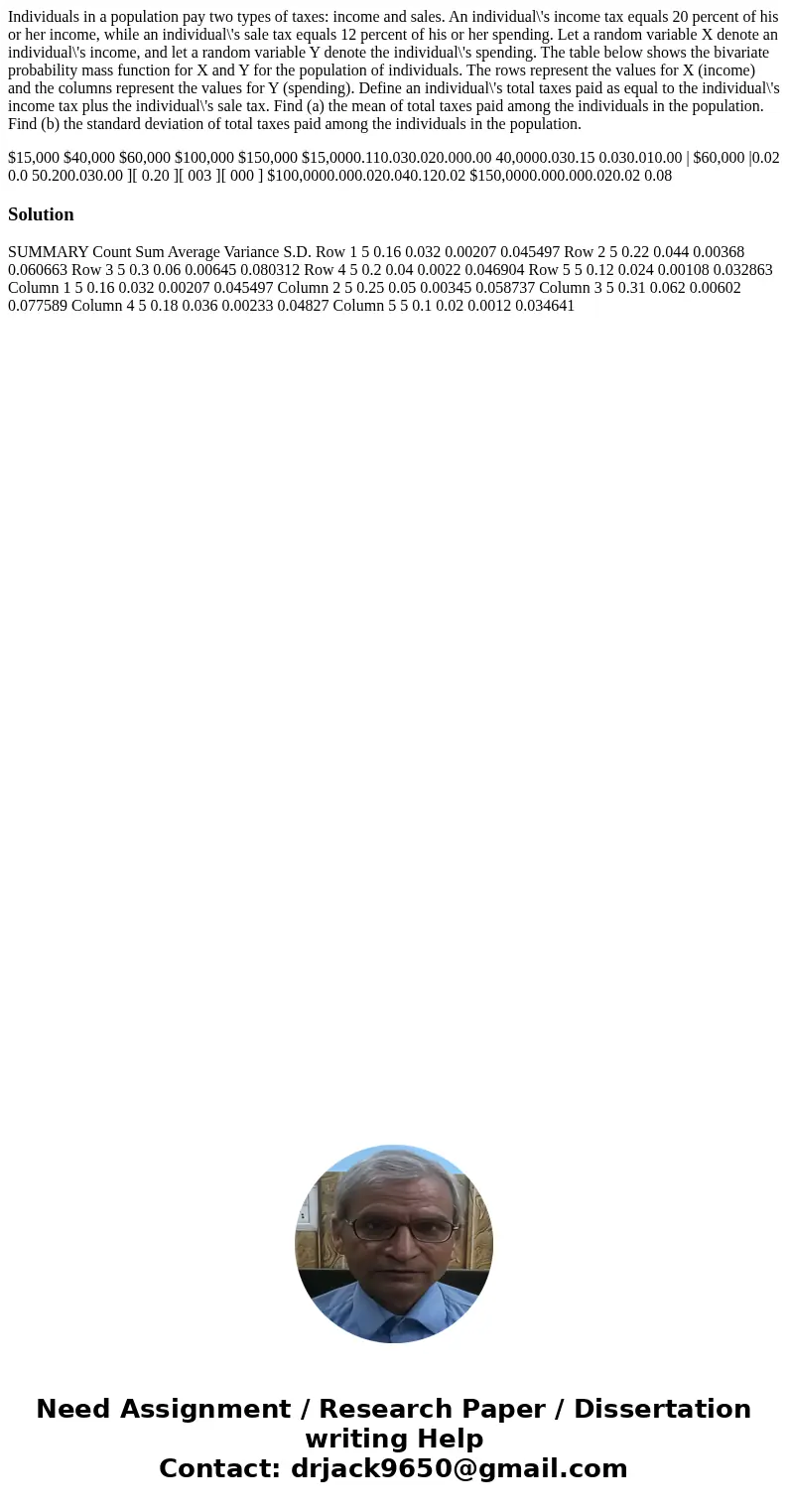Individuals in a population pay two types of taxes income an
Individuals in a population pay two types of taxes: income and sales. An individual\'s income tax equals 20 percent of his or her income, while an individual\'s sale tax equals 12 percent of his or her spending. Let a random variable X denote an individual\'s income, and let a random variable Y denote the individual\'s spending. The table below shows the bivariate probability mass function for X and Y for the population of individuals. The rows represent the values for X (income) and the columns represent the values for Y (spending). Define an individual\'s total taxes paid as equal to the individual\'s income tax plus the individual\'s sale tax. Find (a) the mean of total taxes paid among the individuals in the population. Find (b) the standard deviation of total taxes paid among the individuals in the population.
$15,000 $40,000 $60,000 $100,000 $150,000 $15,0000.110.030.020.000.00 40,0000.030.15 0.030.010.00 | $60,000 |0.02 0.0 50.200.030.00 ][ 0.20 ][ 003 ][ 000 ] $100,0000.000.020.040.120.02 $150,0000.000.000.020.02 0.08Solution
SUMMARY Count Sum Average Variance S.D. Row 1 5 0.16 0.032 0.00207 0.045497 Row 2 5 0.22 0.044 0.00368 0.060663 Row 3 5 0.3 0.06 0.00645 0.080312 Row 4 5 0.2 0.04 0.0022 0.046904 Row 5 5 0.12 0.024 0.00108 0.032863 Column 1 5 0.16 0.032 0.00207 0.045497 Column 2 5 0.25 0.05 0.00345 0.058737 Column 3 5 0.31 0.062 0.00602 0.077589 Column 4 5 0.18 0.036 0.00233 0.04827 Column 5 5 0.1 0.02 0.0012 0.034641
 Homework Sourse
Homework Sourse